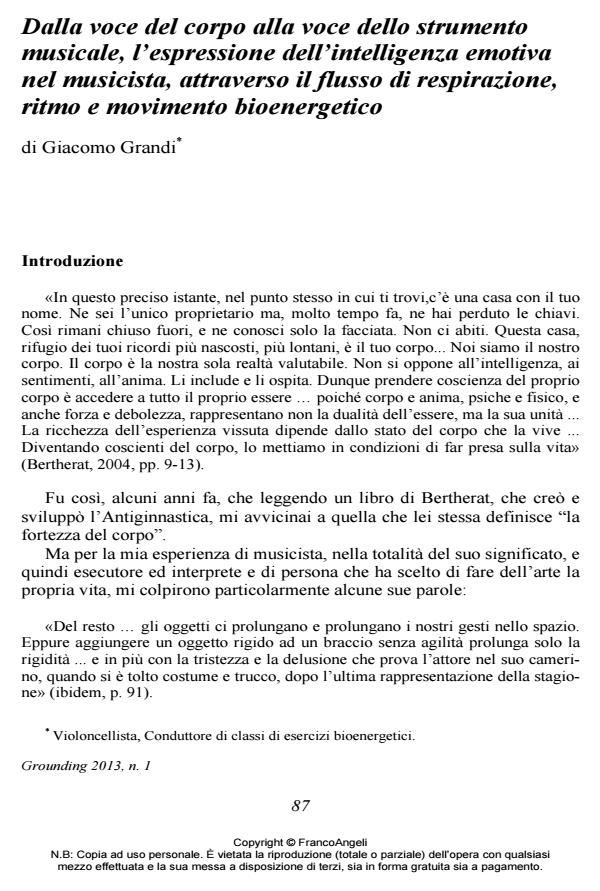Dalla voce del corpo alla voce dello strumento musicale, l’espressione dell’intelligenza emotiva nel musicista, attraverso il flusso di respirazione, ritmo e movimento bioenergetico
Journal title GROUNDING
Author/s Giacomo Grandi
Publishing Year 2013 Issue 2013/1
Language Italian Pages 25 P. 87-111 File size 455 KB
DOI 10.3280/GRO2013-001007
DOI is like a bar code for intellectual property: to have more infomation
click here
Below, you can see the article first page
If you want to buy this article in PDF format, you can do it, following the instructions to buy download credits

FrancoAngeli is member of Publishers International Linking Association, Inc (PILA), a not-for-profit association which run the CrossRef service enabling links to and from online scholarly content.
The music is rhythm, and rhythm can be conceived only figure-variator is filled a body set in motion. The essence for a musician, since the body is his first instrument, that shakes his voice, which in turn gives voice to his musical instrument, is therefore "get moving" in order to find more and more pleasure and freedom execution and interpretation, through the musical instrument. But in doing so might feel a body limited in expression, sometimes blocked or inhibited. Bioenergetics, starting from a path of self-acceptance and empathic contact, can help you understand the reasons and in the energy to flow through the body, to regain possession of his means of expression. The author proposes a journey through the needs of the musician in today’s society, while identifying practical answers in bioenergetic principles.
Keywords: Bioenergetics, musician, voice, sound, expressive movement, empathic contact, energy, breathing
Giacomo Grandi, Dalla voce del corpo alla voce dello strumento musicale, l’espressione dell’intelligenza emotiva nel musicista, attraverso il flusso di respirazione, ritmo e movimento bioenergetico in "GROUNDING" 1/2013, pp 87-111, DOI: 10.3280/GRO2013-001007